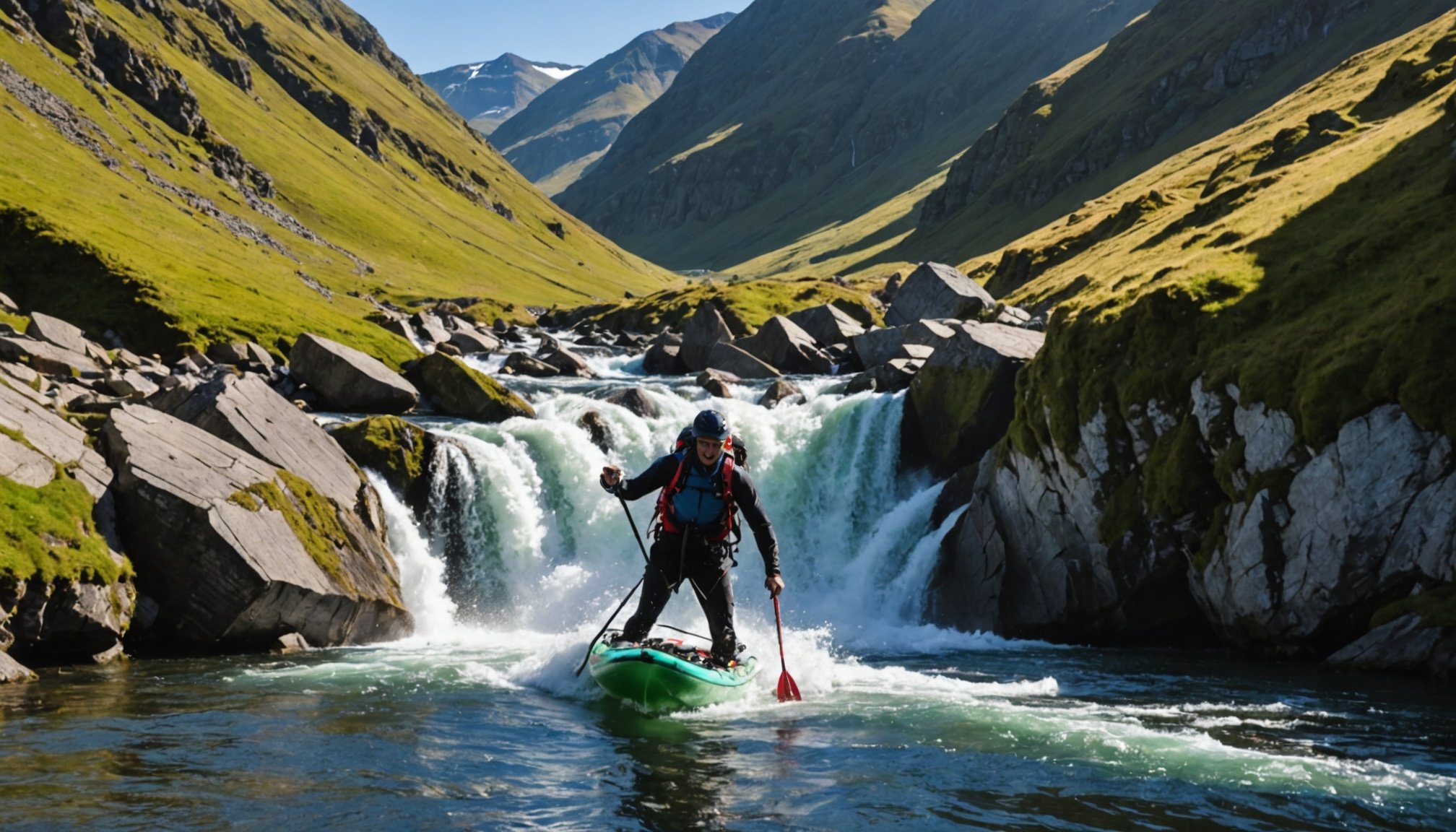Overview of Insurance Requirements for Adventure Sports Companies in the UK
Navigating insurance requirements for adventure sports companies in the UK involves understanding a web of legislation designed to protect both operators and participants. Central to UK legislation is the requirement for companies to ensure they possess adequate cover—this typically includes public liability and employer’s liability insurance. These policies cover injuries to participants and staff, an essential consideration when high-stakes activities are involved.
Adventure sports regulations are particularly stringent due to the inherent risks. Legal compliance requires companies to demonstrate they have identified potential hazards and have systems in place to manage them. Insurance plays a crucial role in this risk management strategy, offering a financial safety net in case of accidents or legal claims.
Additional reading : Step-by-Step Guide to Launching Your UK Online Wellness Coaching Business
A common misconception is that if safety measures are robust, insurance can be minimal. However, this is not the case. Insurance is not only a legal necessity but also a critical business strategy to safeguard assets and reputation.
Companies must keep updated with evolving regulations to maintain UK legal compliance. Understanding the full spectrum of legal obligations and insurance needs is vital for the sustainable operation of adventure sports enterprises.
Also read : How to Launch a UK-Based Eco-Friendly Event Planning Business: A Step-by-Step Guide
Essential Types of Insurance Coverage
Identifying the right types of insurance is crucial, particularly in high-risk environments like adventure sports. The coverage options available cater specifically to various needs, ensuring adequate protection.
Public Liability Insurance
Public liability insurance is foundational for any business operating in the adventure sports industry. It protects organizations against legal claims for injuries or property damage sustained by third parties during activities. This type of insurance is vital as adventure sports are inherently riskier. By having public liability insurance, operators can safeguard their financial interests against potential legal expenses and compensation payouts, minimizing disruptions to business operations.
Employer’s Liability Insurance
For businesses with employees, employer’s liability insurance is mandatory. This coverage protects employers from claims made by employees who suffer injuries or illnesses due to their work environment. In adventure sports, where physical risk is a given, providing this assurance is not only a legal requirement but also promotes workplace safety and morale.
Professional Indemnity Insurance
Professional indemnity insurance is important for service providers offering specialized advice or services. It guards against claims of negligence or inadequate service. In adventure sports, improper guidance can have serious consequences, so having this insurance fortifies a provider’s professional integrity and reputation.
Legal Obligations and Compliance
Navigating the legal obligations in the UK for adventure sports companies can seem daunting. Yet, understanding these compliance requirements is essential to operate smoothly. Firstly, all companies must adhere to local health and safety regulations, ensuring participant protection. This includes risk assessments and maintaining appropriate first-aid facilities.
Compliance with insurance laws is equally crucial. Adventure sports inherently involve risks, and securing appropriate liability insurance protects both the business and participants. Companies should consult with insurance experts to tailor policies that cover specific activities.
Failing to meet these compliance requirements can lead to significant penalties. Authorities may impose fines or even temporarily halt operations for non-compliant businesses. Such disruptions not only affect revenue but can also damage a company’s reputation.
To ensure adherence to all legal obligations, regular compliance checks and staff training are vital. Companies can consult legal experts to keep abreast of evolving regulations. By prioritising these measures, adventure sports businesses can minimise risks and foster a safe environment for thrill-seekers, thus ensuring a sustainable enterprise.
Risk Management Strategies
Effectively managing risk in adventure sports requires a combination of strategies that prioritise safety and incident prevention. Integrating thorough safety protocols is crucial to safeguarding both participants and staff.
Developing Comprehensive Risk Assessments
The foundation of any robust risk management strategy is the development of detailed risk assessments. These assessments identify potential hazards and evaluate the likelihood and impact of incidents. For effective risk management, adventure sports operators should consider all aspects of their operations, from equipment and environment to participant experience levels. Employing risk management in this manner ensures a proactive approach to safety.
Implementing Safety Procedures
Once risks have been assessed, establishing strict safety procedures is the next step. Best practices include regular maintenance checks on equipment, the establishment of clear emergency protocols, and routine inspections. These safety protocols play a vital role in incident prevention, reducing the chances of accidents in adventure sports activities.
Training and Certification Importance
Training and certification are essential for both participants and instructors to minimise risk. Certified training programs ensure that staff members are well-equipped to handle emergencies and that participants understand the necessary safety measures. This understanding further reinforces adherence to safety protocols, bolstering the overall effectiveness of risk management strategies.
Case Studies and Real-Life Examples
In the realm of adventure sports, insurance can be a critical safety net. Examining a variety of case studies, we’ve identified instances where insurance policies have significantly impacted outcomes for individuals and businesses alike.
One notable industry example involves a rock climbing facility that effectively managed risk through comprehensive insurance coverage. When a customer was injured, the facility’s appropriate insurance policy covered medical expenses and legal costs, preventing financial strain and safeguarding their reputation. This case serves as a reminder of the importance of having a well-rounded insurance plan tailored to specific industry needs.
In contrast, some companies have faced challenges due to inadequate risk management strategies. A notable failure in this area was a ski resort that skimped on essential coverage. Amidst unforeseen circumstances, they encountered substantial insurance claims that they couldn’t fulfill, leading to irreversible financial damage. This underscores the necessity of understanding industry-specific risks and proactively addressing them.
These real-life examples not only highlight the significance of insurance in mitigating potential losses but also offer invaluable lessons in foresight and preparation, teaching businesses how key decisions around insurance can profoundly influence their sustainability and success.
Tips for Selecting the Right Insurance Policy
When selecting insurance for adventure sports activities, several key considerations can ensure the best coverage for your needs. Begin by identifying the specific risks associated with the adventure sports you or your clients engage in. This assessment serves as the foundation for choosing an insurance provider equipped to handle these specific risks.
Next, when comparing insurance policies, examine each provider’s experience with adventure sports. Providers with expertise in this niche often offer more comprehensive coverage, as they understand unique industry challenges. Pay attention to coverage limits, exclusions, and costs, ensuring the policy matches your risk profile and budget.
Understanding policy terms is crucial. Many insurance policies include technical jargon. Break down complex terms and clarify conditions to ensure you know what’s covered. It’s wise to contact the provider for any clarification.
Regularly evaluate and update your insurance as your business evolves. Changes in business operations or offerings may require adjusting your coverage. Regular reviews can prevent potential gaps, safeguarding your livelihood against evolving risks.
By diligently analyzing these elements, you position yourself to make informed decisions that provide peace of mind, knowing you’re protected against the unexpected.
Resources for Adventure Sports Companies
Navigating the complexities of operating an adventure sports company can be overwhelming, especially when it comes to resources and industry standards. This section will guide you through vital insurance information and available support resources.
Government Resources
When seeking insurance information, government agencies are a reliable first stop. They often provide frameworks that outline the basic industry standards necessary for compliance. Websites like the Health and Safety Executive (HSE) in the UK or the Occupational Safety and Health Administration (OSHA) in the US offer guidelines tailored to various adventure sports activities. Such resources are indispensable for ensuring safety and legal compliance.
Industry Associations
Joining an industry association can open doors to a wealth of knowledge and support tailored specifically for adventure sports companies. These organizations offer insights into industry standards, as well as networking opportunities. They often hold conferences and workshops where you can engage with peers and experts, ensuring your business stays informed and competitive.
Online Tools and Calculators
A multitude of online tools and calculators can further assist in determining insurance needs and evaluating potential costs. These resources can provide quick estimates and comparisons, empowering you to make informed decisions about the insurance policies best suited for your business.











